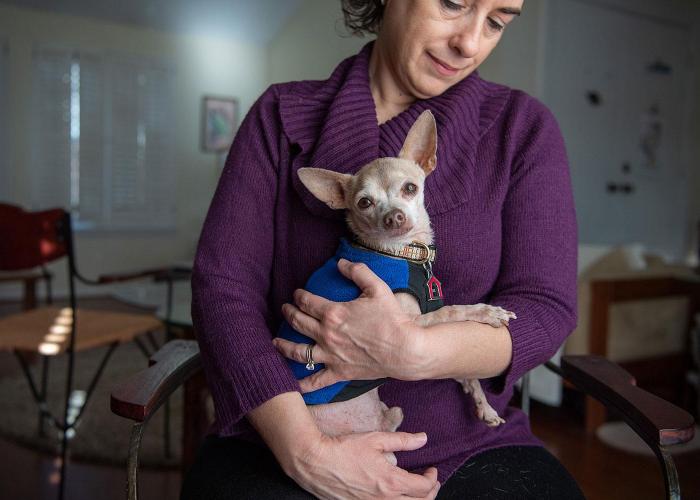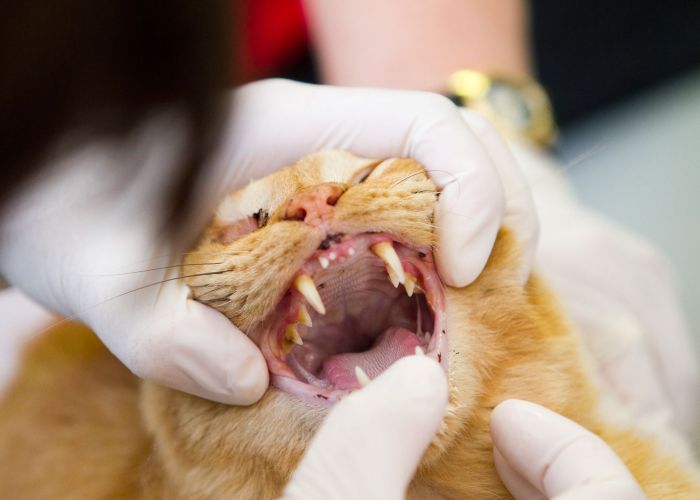This ‘little’ piggy
They don’t actually exist, but that doesn’t stop “mini” pigs from showing up at shelters
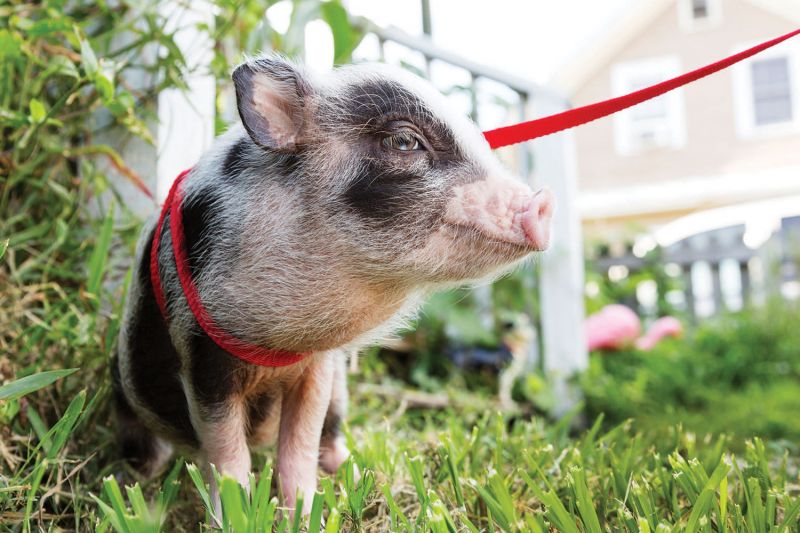
His roommate’s fraternity thought it would be funny to get a pet pig, says Adam Debling, a Michigan State graduate who was a sophomore in 2015. And so the fraternity brothers drove out to a rural pig breeder and offered up $50. They came home with a tiny potbellied piglet whom they kept in a crate in their off-campus house. Debling named her Piggy.
Over time, Debling started coming home from class and letting Piggy out of her crate. She would “hop up on the couch and snuggle up next to me just like a dog,” he says. “No one was taking care of her, so I just sort of took over.”
Within nine months, Piggy weighed over 100 pounds and behaved “like a dog, but a lot smarter.” She stole and scarfed down whole pizzas; she rooted through kitchen cabinets and chewed through boxes of crackers. She liked chips and cereal, but she frequently attempted to eat—and would consequently choke on—inedible substances, meaning Debling would regularly have to perform a sort of piggy Heimlich maneuver. She litter-box trained herself, and as she got bigger, Debling would let her outside to do her business. The neighbors started calling the college rental “the pig house.”
On his small student budget, Debling took Piggy to a veterinarian, where he learned he’d been mistakenly feeding her commercial hog food designed for fattening pigs. He bought potbellied pig food. He duct-taped the kitchen cabinets closed. When their landlord stopped by the house, the roommates would band together to hide Piggy in the basement, praying she wouldn’t voice her indignation.
After a year of his life revolving around Piggy, Debling chose to rehome her with the family and fenced-in yard he felt she deserved. But he says that one day, when he has the right setup, he’d love to have another pet pig. “When she was happy she’d want to cuddle next to you and lie on your lap. When she was upset she would knock against you and make upsetting oinks,” he says. “She almost felt like having a little toddler.”
This little piggy cried wee, wee, wee
That big personality is what makes pigs so fantastic and yet so unsuited for most people’s lifestyles, says Alesja Daehnrich, co-founder of Blind Spot Animal Sanctuary in Rougemont, North Carolina. Blind Spot cares for up to 45 pigs and always has a list of pigs at shelters awaiting a place at the sanctuary.
“Pigs are incredibly sensitive and emotional creatures,” Daehnrich says. “These are farm animals that require four to six hours outside to do what pigs do—socialize with other porcine friends, root, graze, sunbathe. If pigs don’t get enough time outside, they often become lonely, depressed and destructive. We’ve heard of cases where pigs have lifted hardwood floors and chewed through walls.”
Kristie Mozzachio, a veterinarian who specializes in potbellied pigs, is also no stranger to tales of porcine destruction. “They tend to be a little more aggressive when they’re searching for their food, so they’re like, ‘I’m just going to tear this thing apart to get to that food.’ They just find the shortest path,” she says.
Other behaviors that unsuspecting new pig owners might find undesirable include displays of dominance like head swiping, humping, charging and biting; ear-splitting shrieking and barking when stressed; and even “piggy premenstrual syndrome” every 21 days, says Mozzachio. “Unaltered pigs do not make good pets,” says Daehnrich, but “99.9%” of potbellied pig breeders send pigs home unfixed, ignoring the eventual likelihood of “humpy behavior” and “a very distinctive smell.”
Beyond piggy PMS, there’s also “single pig syndrome,” a set of behaviors that arise when pigs are unable to determine their place in the herd hierarchy—because their “herd” is a bunch of humans, not pigs—and become lonely, depressed and even aggressive. “They simply don’t have a friend who speaks their language,” says Daehnrich.
“Many newly rescued pigs meet their own kind for the first time at the sanctuary,” she adds. “In most cases, as soon as the single pig is introduced to another pig or a herd of pigs, the unwanted behavior of challenging humans, biting, et cetera, disappears.”
Throw in the fact that many breeders sell small, underaged piglets before they’re fully weaned—“Mom corrects the piglets when they are misbehaving, and the piglets are learning from each other as well,” says Daehnrich—and neglect to tell new owners that pigs require significant outdoor time each day, annual shots and hoof and tusk trimming, and you have a perfect storm for, let’s say, feisty behavior.
“Pigs are incredibly sensitive and emotional creatures. ... These are farm animals that require four to six hours outside to do what pigs do—socialize with other porcine friends, root, graze, sunbathe.”
—Alesja Daehnrich, Blind Spot Animal Sancutary
“It’s like having a toddler for 15 to 20 years,” says Joanna Dychton, farm and safety manager at Lollypop Farm in Fairport, New York, an open-admission shelter that’s currently housing over 30 surrendered and stray pigs. “They are very intelligent, they want to learn things, they’re very smart. But they do have high emotion, and they don’t always know how to express that emotion, so they throw tantrums. They act out.”
This little piggy stayed home
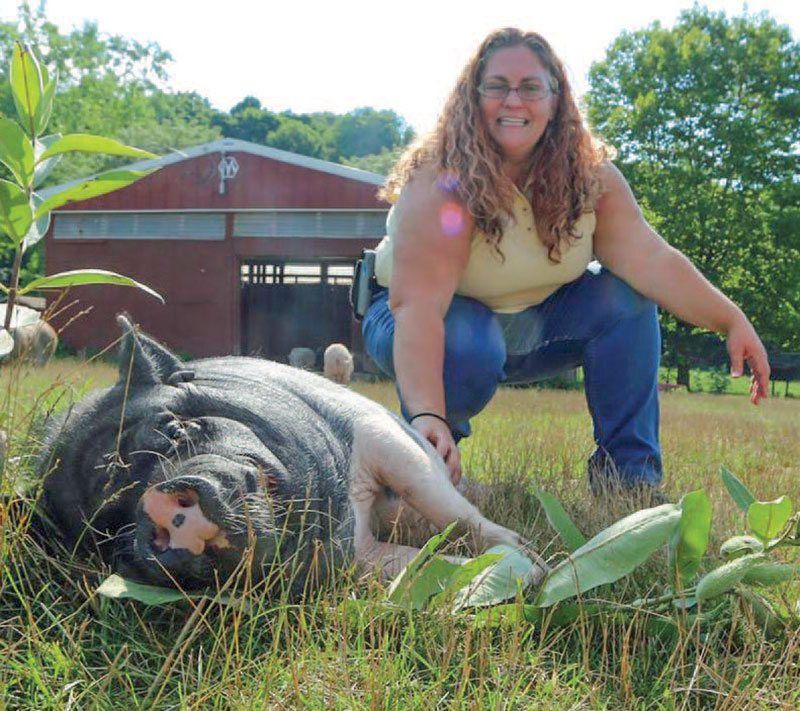
Along with undesirable behaviors, owners surrendering potbellied pigs blame area zoning restrictions that don’t allow for pet pigs, who are considered livestock, and the pigs’ often unexpectedly large size, says Dychton.
Many pig owners buy minipigs (an umbrella term for smaller breeds of pigs) assuming they’ll be just that—mini—and are less-than-enthused when they suddenly have to carry a pig the size of an adult human up and down the stairs of their apartment complex (pigs don’t do stairs) for 15 to 20 years (the lifespan of a healthy pig).
“People want to believe the lie; they want to believe in this animal that doesn’t exist,” says Dychton. It’s true that the Vietnamese potbellied pigs most often sold as pets are “small” for their species, or at least smaller than commercial hogs. Hogs can reach 1,000 pounds, while healthy, adult potbellied pigs will top out around 150 to 200 pounds. So potbellied pigs are small pigs. Technically. But breeders continue to advertise pigs who they claim will stay under 100, 50 or even 20 pounds. As pigs don’t reach full size until around 5 years old but can breed much sooner, it’s easy for breeders to deceive buyers by pointing to young pig parents as evidence that their piglets will remain small.
Adult commercial hogs can reach 1,000 pounds, while adult potbellied pigs typically top out around 150 to 200 pounds.
“There are no teacup pigs. There are no 20- to 30-pound, full-grown pigs anywhere. I have three patients who are 30 to 35 pounds, but it’s not reproduceable in multiple litters, and every one of them is a genetic misfit,” says Mozzachio. “It’s not something to strive for, or look for, or pay thousands of dollars for, because it doesn’t exist.”
So people can start out with a tiny, snuggly piglet who they’ve trained to get her own snacks from the fridge and end up with a 150-pound, possibly depressed pig who pushes the fridge over entirely (true story!). That’s usually when people start knocking on shelters’ and sanctuaries’ doors, says Dychton.
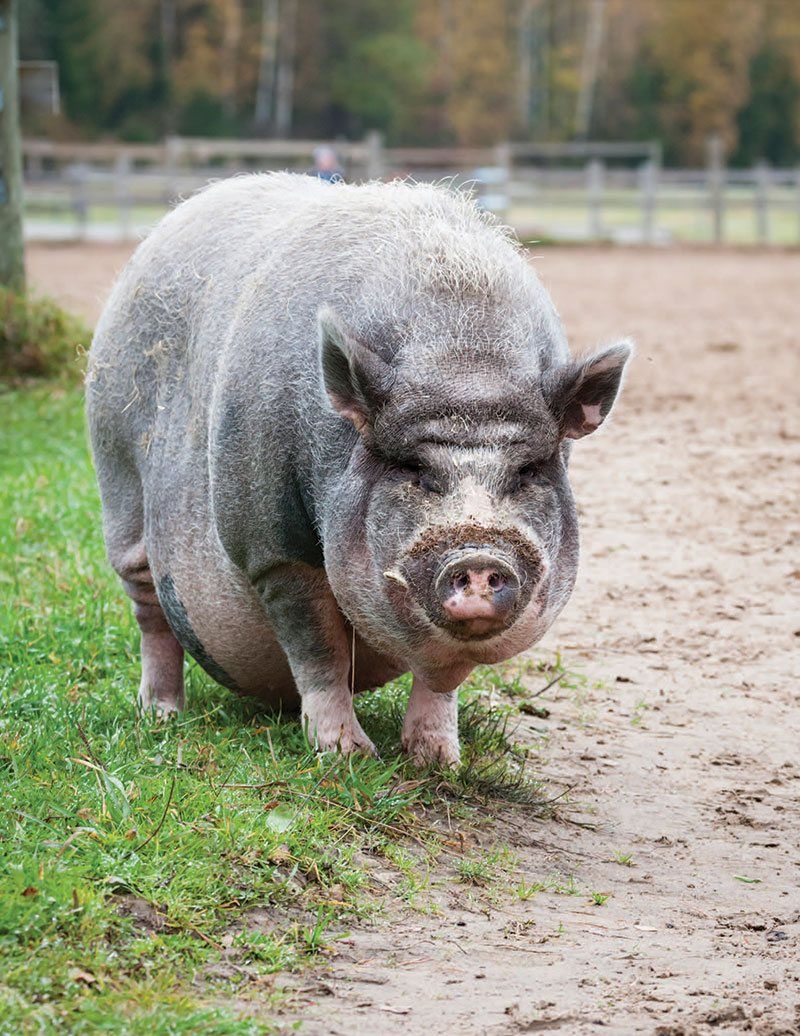
“We’ve never had this many pigs before in my 20 years here,” she says, noting that many pigs—even pigs who came from less-than-ideal situations—become so depressed when separated from their former owners that the farm doesn’t allow them to visit for at least 60 days to avoid behavioral setbacks. There’s no clear cause of the potbellied pig explosion, she says, but Dychton, Daehnrich and Mozzachio all cite celebrities who own potbellied pigs and social media—with its endless adorable pig videos and rampant pig misinformation— as potential drivers of the trend. Unscrupulous breeders are happy, of course, to profit from any pet fad, while naive buyers, nonprofit animal organizations and the pets themselves ultimately pay the price.
Many of the pigs at the sanctuary are crosses of commercial, potbellied, kunekune, Yucatan and other breeds, bred to produce unique coloration or markings and, of course, smaller pigs, but sold as “Dandie,” “Juliana,” “teacup,” “toy” and “pocket” pigs, instead of what they are: mutts. Breeders then sometimes provide feeding guidelines that are akin to a starvation diet, says Daehnrich, so that the “designer” pigs they sell for as much as $3,000 will stay small.
Mozzachio says pigs gain weight easily and frequently present with severe obesity— fat rolls that cover the eyes, a tail that’s embedded into the buttocks and ears pushed horizontal by fat, even resulting in arthritis, blindness and deafness— and so it’s especially alarming that so many pigs are now entering shelters and sanctuaries underweight.
“There are no teacup pigs. There are no 20- to 30-pound, full-grown pigs anywhere.”
—Kristie Mozzachio, Veterinarian and potbellied pig specialist
According to Dychton, piglets need far more food than adult pigs, and feeding them the wrong amount during that integral growth period can cause osteoporosis, organ damage and, in many cases, an early death. “It’s horrifying,” she says, listing case after case of heartbroken owners who had no idea they were starving or overfeeding their pets to death. One owner “felt horrible for all those things that she did wrong for [her pig]. She said, ‘I loved him, but love wasn’t enough because sometimes you can kill with kindness.’”
“I tell people when they come in looking to adopt, ‘It’s going to sound like I’m trying to convince you not to adopt, but it’s because I have to dispel all the myths. They’re one of the most amazing animals we have on the farm, they are so rewarding to be around, and yet it’s going to sound like I’m trying to talk negative about them because there’s just so much misinformation,’” says Dychton, who’s frustrated when even well-meaning owners, breeders and veterinarians do little to debunk the minipig myth. “We’re all in this together, and it’s literally like treading water trying to place pigs appropriately and tell the truth.”
Document



